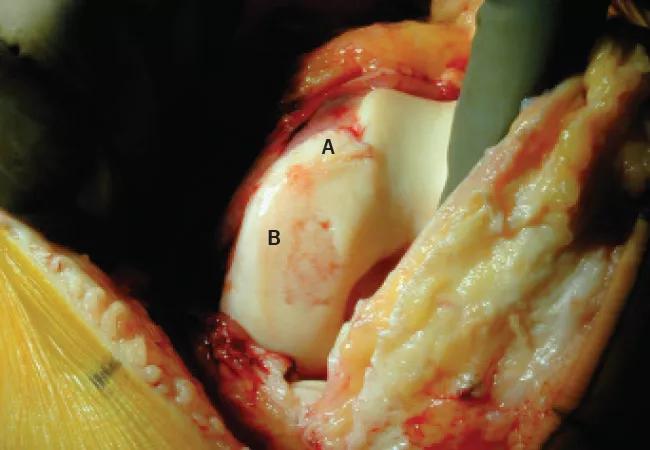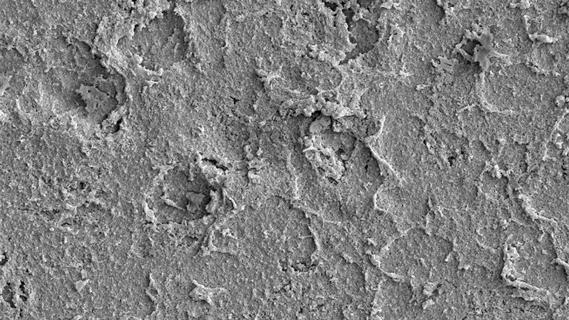Advertisement
Examining PT + HA for OA

Advertisement
Cleveland Clinic is a non-profit academic medical center. Advertising on our site helps support our mission. We do not endorse non-Cleveland Clinic products or services. Policy
Knee osteoarthritis (OA) is a common disease associated with significant morbidity including daily pain and decreased mobility. As the aging population increases, knee OA prevalence and knee replacement surgeries have increased in the U.S. Although risk factors for cartilage loss in OA including obesity, repetitive activities, and gender have been established, the determinants of pain and disability are less clear.
Recent attention has focused on the need for nonsurgical, effective, yet sustainable management for individuals suffering from knee OA. Current guidelines from the American College of Rheumatology (ACR) and the European League Against Rheumatism (EULAR) emphasize the importance of including physical therapy (PT) and exercise as first line of treatment. The benefits of PT have been well studied, including increased muscle strength, improved range of motion and pain relief.
Another significant modality to treat knee OA pain is an intra-articular injection of hyaluronic acid (HA). HA has been proposed to provide a variety of mechanistic benefits including joint lubrication, anti-inflammatory effects, cartilage matrix benefits and promotion of proteoglycan synthesis. Although many HA preparations are FDA approved for the treatment of knee OA, the overall clinical benefit has been less clear.
Currently there is no cure or disease-modifying agent for knee OA. Our team hypothesized that the addition of intra-articular HA injections to physical therapy would have a synergistic effect in alleviating pain and reducing disability in patients with knee OA.
Advertisement
We compared the use of hylan-GF20 (Synvisc One®) injection with placebo control in conjunction with standardized physical therapy in patients with knee OA. To our knowledge, this is the first randomized, single-blind study that compares the addition of intra-articular injection with hylan-GF20 versus a sham injection to standardized PT for knee pain and function. This study was performed on 42 symptomatic patients and included 24 weeks of follow-up. The patients were randomly divided into two treatment groups: patients in group one were given intra-articular treatment with hylan-GF20 during the baseline visit, and group two received a sham injection during the baseline visit. Both groups received standardized physical therapy treatment using a knee OA protocol.
The Knee Injury and Osteoarthritis Outcome Score (KOOS) patient questionnaire was our primary outcome measure. We compared results at baseline and week 12 between the two groups. In addition, we compared survey responses at 24 weeks to examine the longer interval from baseline treatment response. Clinical assessments for each patient were made at one, three, six, nine and 12 weeks using the following measures: KOOS, timed up-and-go, 36-item short form survey (SF-36), visual analog scale (VAS) and standard physical therapy measures.
The patient characteristics were similar between the two groups at baseline. Although greater means level improvement was seen at 12 weeks in all KOOS subscales, timed up-and-go and VAS scales, these differences did not reach statistical significance between the Synvisc One- and sham-treated groups. No significant differences were observed at week 24 between the two treatment groups, perhaps due in part to the small sample size.
Interestingly, the quadriceps strength observed at 45 and 90 degrees was statistically different among the groups. Further analysis is needed to determine whether the Synvisc One group’s greater mean strength improvement in the quadriceps is beneficial.
This study was performed to evaluate whether standardized physical therapy and the intra-articular use of Synvisc One in knee OA would reduce pain and improve knee function when implemented together. This pilot demonstrated the safety and tolerability of Synvisc One in our patients. Synvisc One was generally well tolerated, and no serious adverse events were found or caused patient withdrawal. Additionally, the numerical difference in the KOOS pain scale of patients in Synvisc One group showed the potential of HA in conjunction with PT.
Overall, Synvisc One can be conditionally recommended if patients have an inadequate response to a trial of analgesics. It remains unclear which specific patients (age, grade of knee OA) would benefit the most from Synvisc One and concurrent physical therapy. Large-scale, longitudinal studies are critically needed to examine the role of physical therapy and intra-articular HA in patients with knee OA.
Dr. Husni (husnie@ccf.org; 216.445.1853) is Director of the Arthritis and Musculoskeletal Treatment Center and Endowed Chair of Translational Functional Medicine Research at Cleveland Clinic.
Advertisement
Advertisement

This rare disease usually manifests as a firm, painless mass that is growing

Gamers are athletes who can benefit from athletic training

More report a clinically meaningful change in function at 90 days compared to patients with lower BMI

Patient climbs Mount Kilimanjaro 8 months after surgery

A behind-the-scenes look at Cleveland Clinic’s role as medical services provider of the 2023 Summer Series

Sports medicine pioneer John Bergfeld, MD, shares how orthopaedics has changed since doing his first ACL repair in 1970

Researchers hope it may one day help patients avoid explantation surgery

Rest is often not the best care for gamers’ overuse injuries